Photography by Shivam Kumar Arya
Published on 15 August 2025
In the heart of Bihar, one of India’s most populous states, middle schools like the one in Darwa village, Samastipur district, serve as vital lifelines for education amid significant systemic challenges. Bihar allocates a substantial portion of its state budget to education, around 19-22 percent in recent years, with over Rs. 54,000 crore dedicated in the 2024-25 fiscal year alone. Yet per-child spending remains relatively low compared to national averages, often stretched thin across a vast student population. Issues such as inadequate infrastructure, teacher shortages, and socio-economic barriers plague the system, contributing to high dropout rates and learning gaps. Despite these hurdles, schools like Darwa Middle School embody resilience, offering not just lessons but a semblance of hope for rural children navigating poverty and limited opportunities.
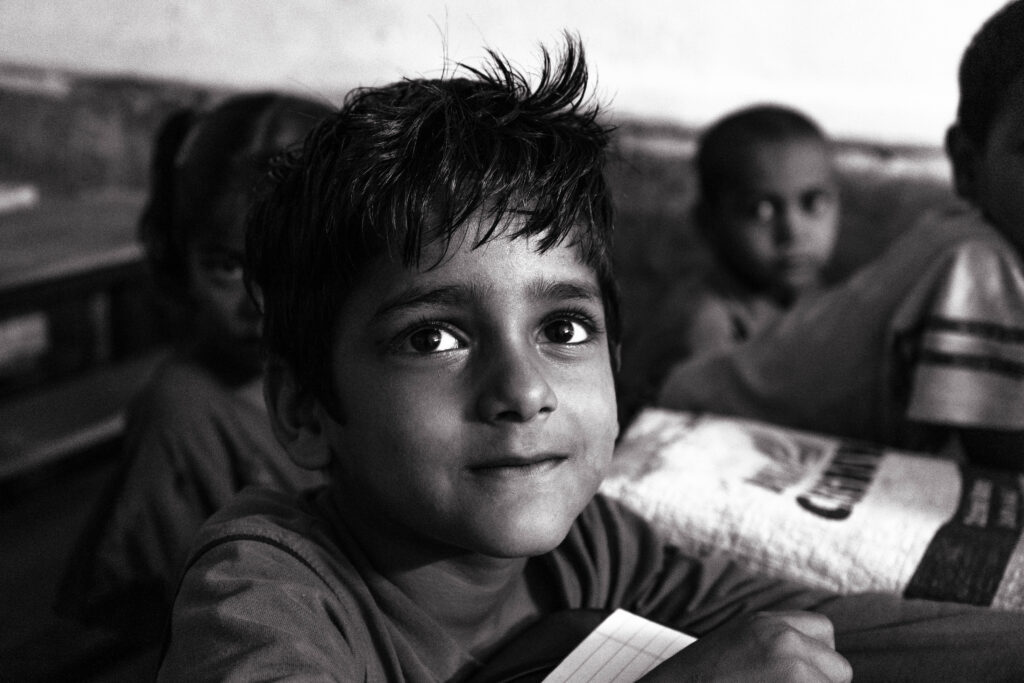
Parmod Kumar, the headmaster of Middle School in Darwa, begins his day waiting in the office as the school prepares for the morning prayer. One by one, students arrive: some on foot, others by bicycle. Many appear tired and exhausted, having come to school without breakfast, a common reality in Bihar where hunger affects focus and attendance. With approximately 1.1 million children aged 6-13 out of school statewide, those who do attend often face empty stomachs due to economic hardships at home, underscoring the critical role of government programs like the mid-day meal scheme.
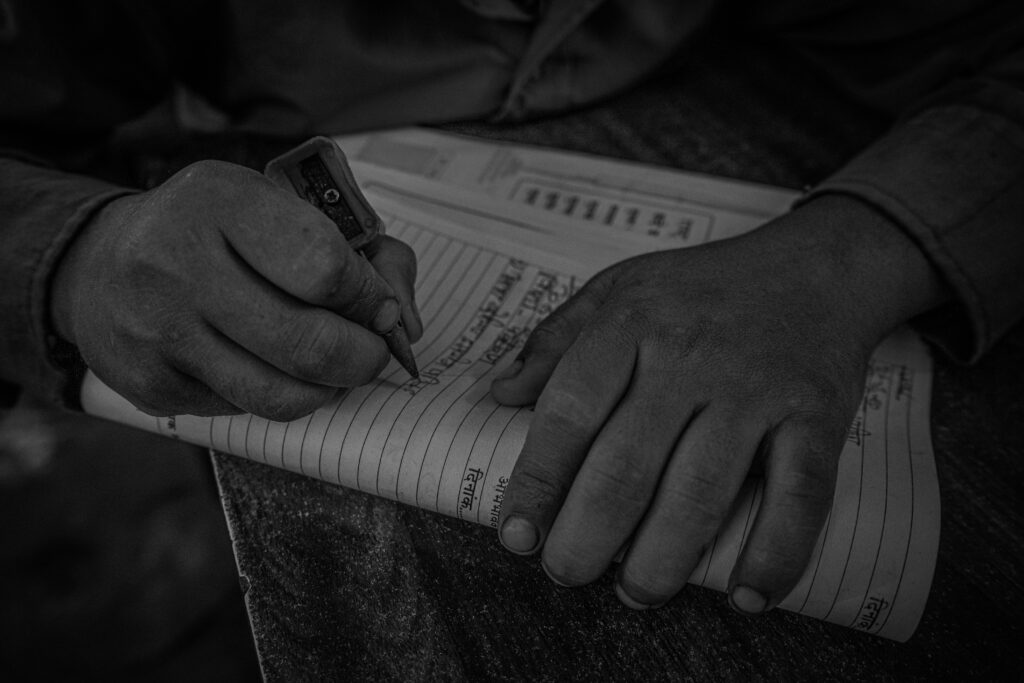
The atmosphere in the school blends anticipation with quiet struggle. Some children wait silently for the mid-day meal, their empty stomachs hindering their focus, a reflection of broader nutritional challenges in Bihar’s education landscape. While a few students listen keenly to their lessons, others lose themselves in daydreams, their minds drifting far from the classroom. Infrastructure deficits exacerbate these issues. For instance, only about 5 percent of schools in Bihar have computers, and 15 percent have internet access, limiting exposure to modern learning tools and widening the digital divide, especially in rural areas like Darwa.
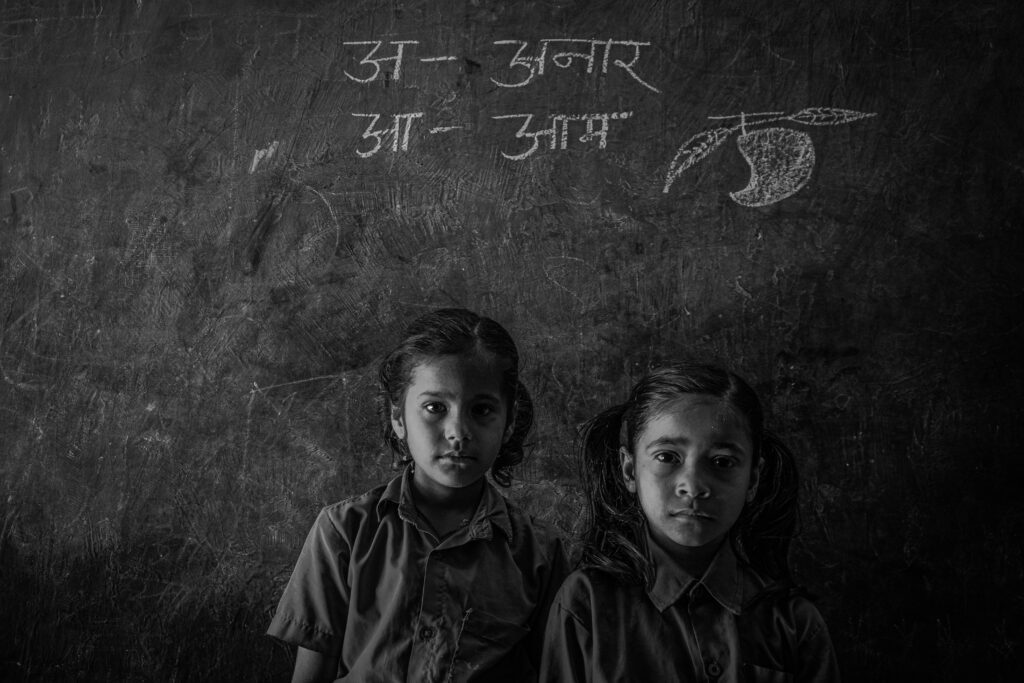
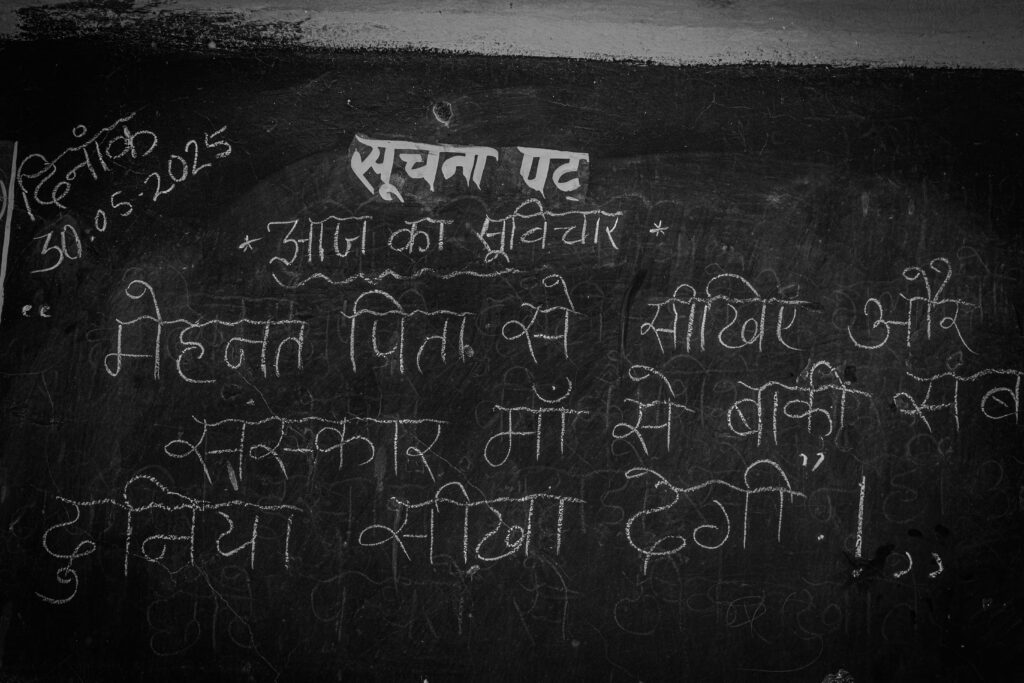
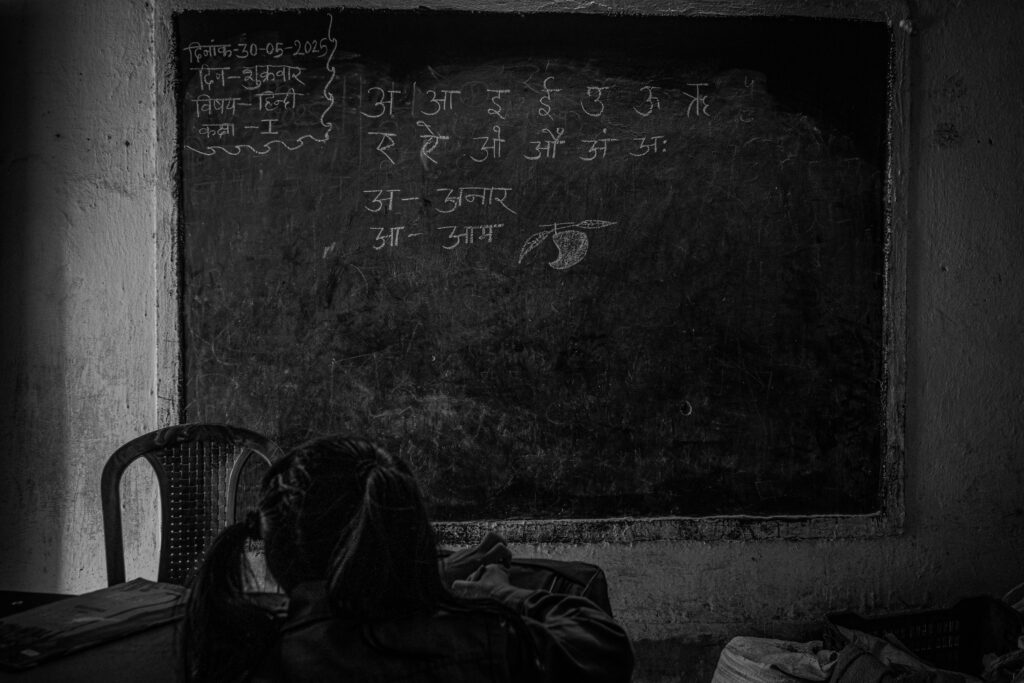
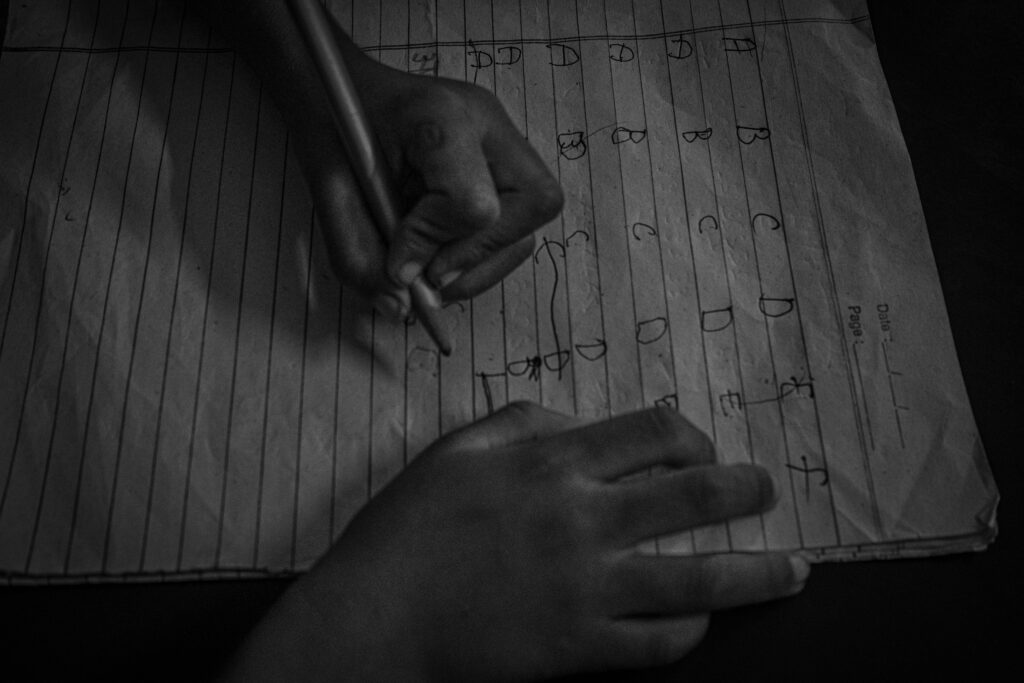
In Class 7, students tackle a class test. The school features a unique student body of class representatives, known as “Prime Ministers,” fostering a sense of leadership among the youth. Open books and busy pencils fill the scene, yet many children remain uncertain about their future. Some aspire to join the army, while others are still unsure of what lies ahead, an uncertainty amplified by systemic problems like grade inflation in high school exams and acute examination stress, which sometimes leads to tragic outcomes. Teacher recruitment and professional development remain ongoing challenges, with shortages leading to overburdened staff and inconsistent quality of instruction.
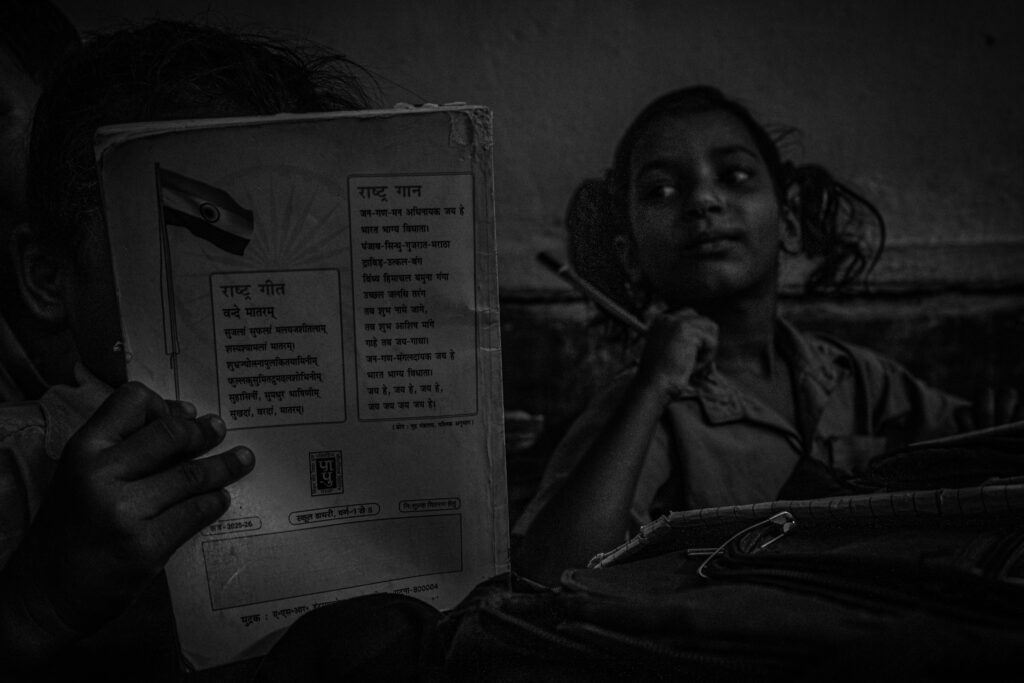
Every 45 minutes, the school bell rings, signaling the shift to the next class. However, the most anticipated bell is the one marking lunchtime. At its sound, students rush to collect their plates. Lunch, served in the corridors, typically includes rice, dal, and mashed potatoes, locally called chokha. This meal is more than sustenance. It’s a cornerstone of Bihar’s education efforts, funded through a combination of state and central allocations, where Bihar often exceeds its mandated contribution. Yet, despite the program’s success in boosting enrollment, implementation gaps such as inconsistent supply chains and quality control persist, highlighting budgetary strains and administrative inefficiencies.
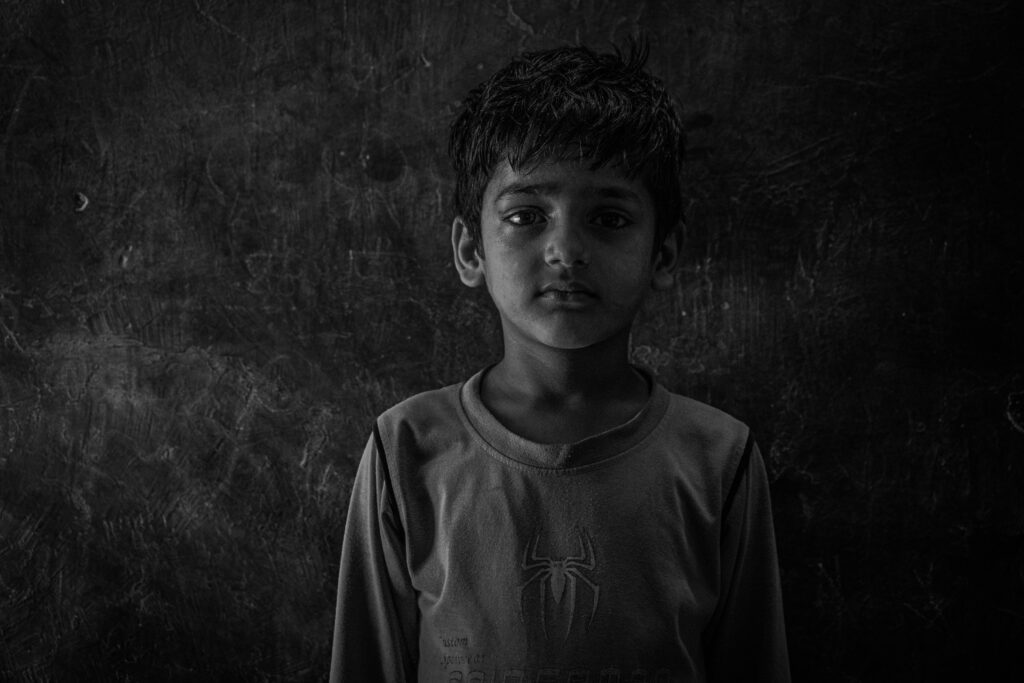
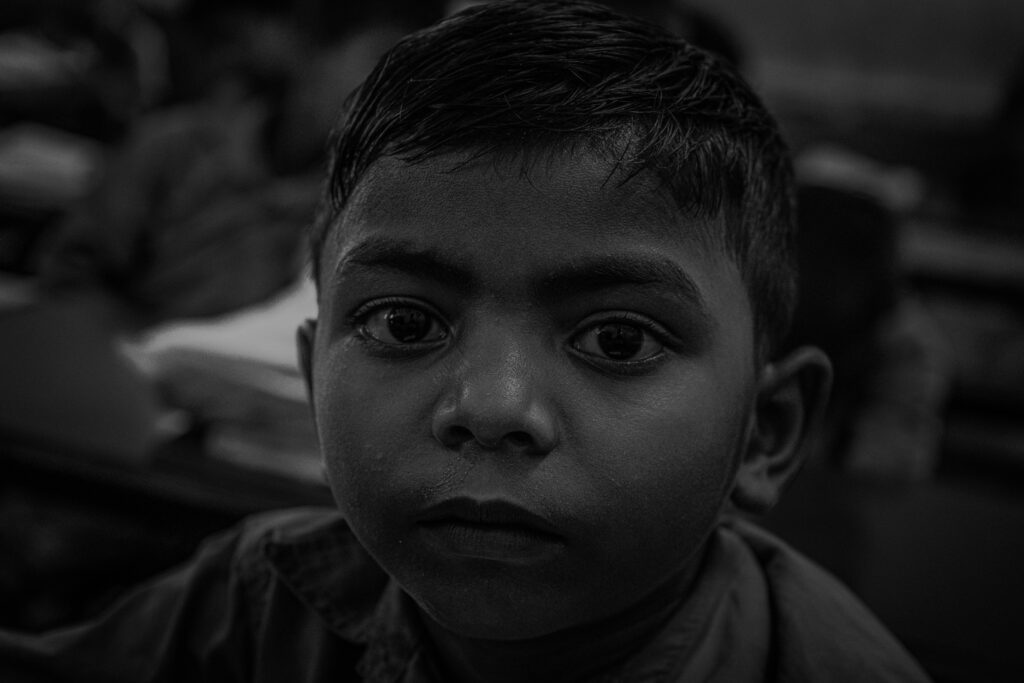
The simple yet hearty meal brings smiles to the children’s faces. Revitalized, they head back to their classrooms, ready for the second half of the day. This brief reprieve underscores the importance of holistic support in Bihar’s schools, where socioeconomic barriers like poverty and gender disparities often hinder progress. For girls, in particular, issues such as inadequate separate toilet facilities, available in only about 60 percent of schools, contribute to higher dropout rates at the middle school level.
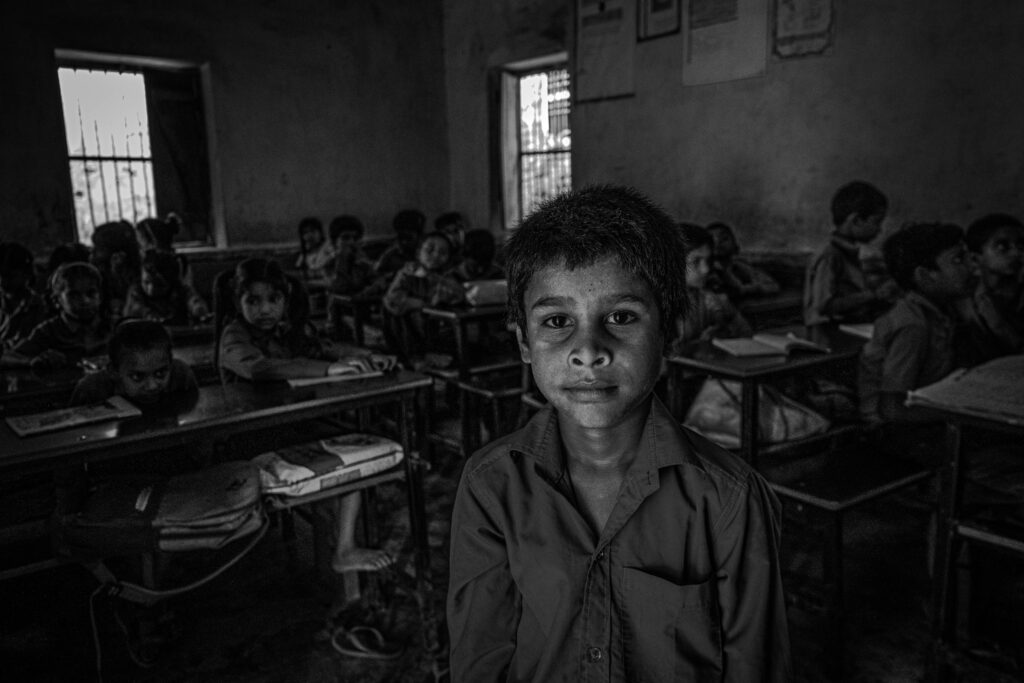
Classes continue until the final bell signals the end of the school day. With bags slung over their shoulders, students hurry homeward. Their steps may be slow, but they carry the spirit of a full day of learning and experiences. In a state grappling with learning losses from past school closures and limited home resources for disadvantaged groups, these daily routines build foundational skills amid adversity.
The children at Middle School, Darwa, are grounded and brimming with raw emotions. The school reflects not just a place of education but a journey marked by challenges, dreams, and resilience. Broader investments are needed to address Bihar’s education woes, such as increasing funding for infrastructure, teacher training, and digital access, to ensure that schools like this one can truly empower the next generation. As Bihar pushes forward with its budget priorities, stories from Darwa remind us that behind the statistics lie young lives full of potential, waiting to flourish.


